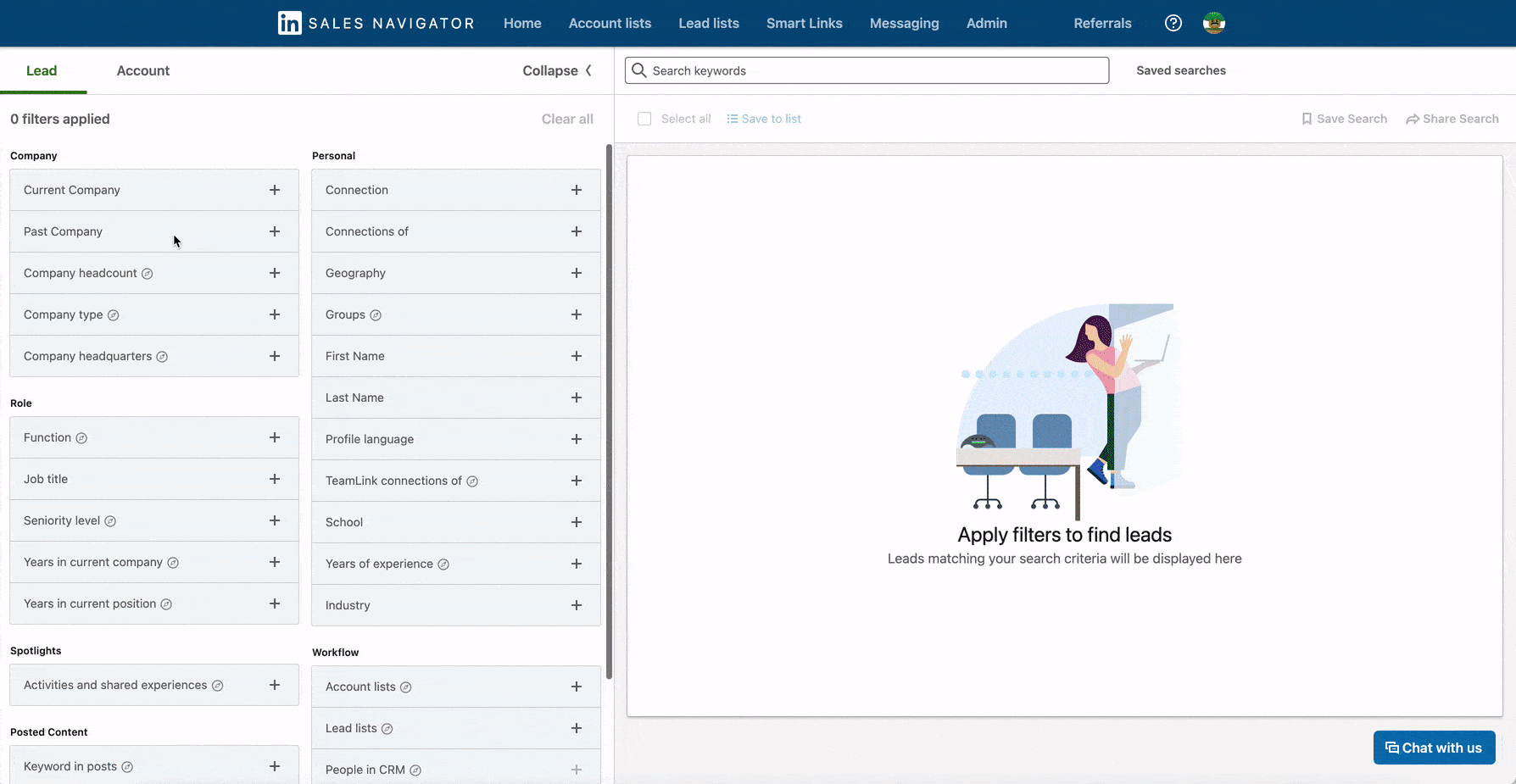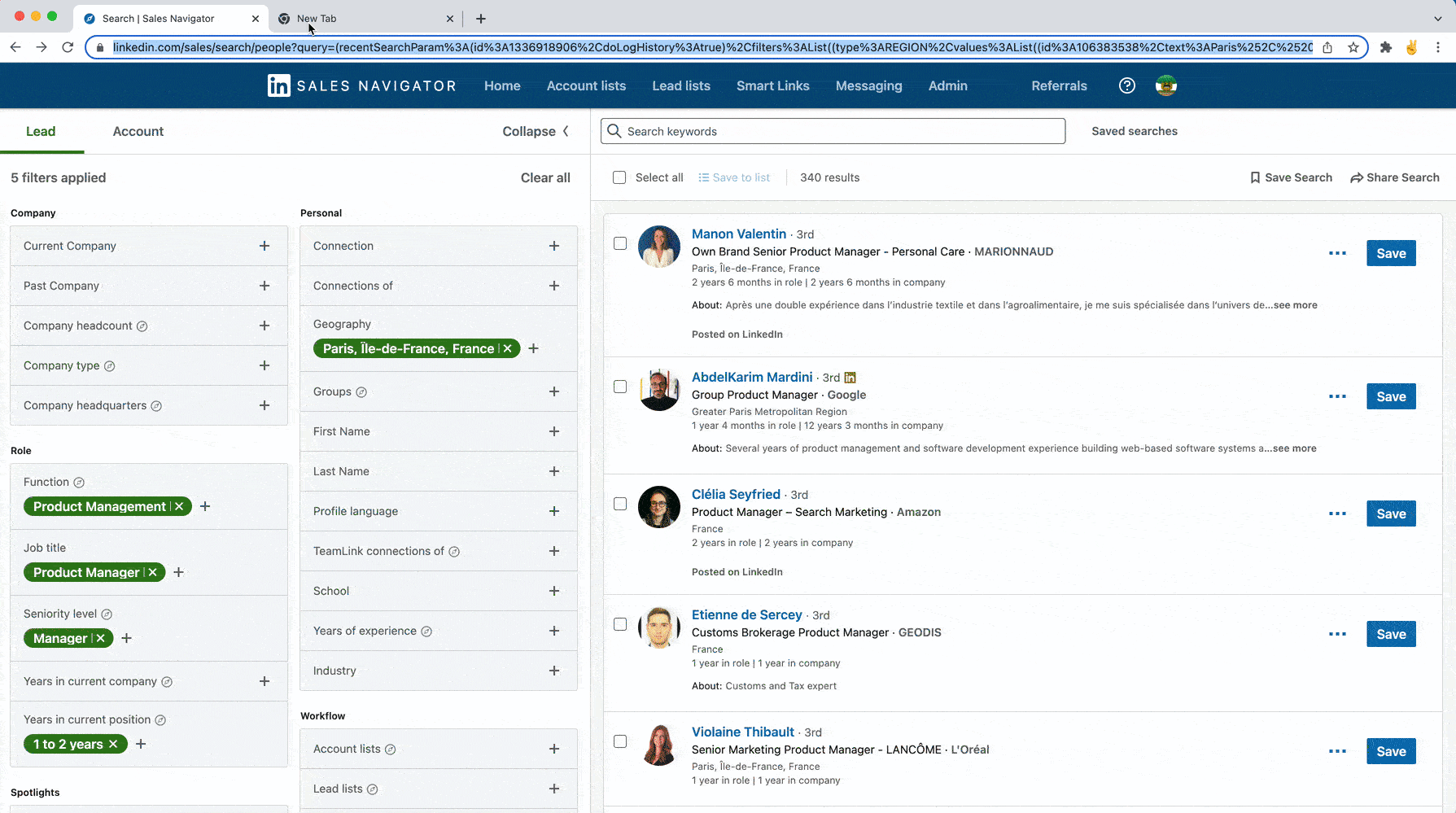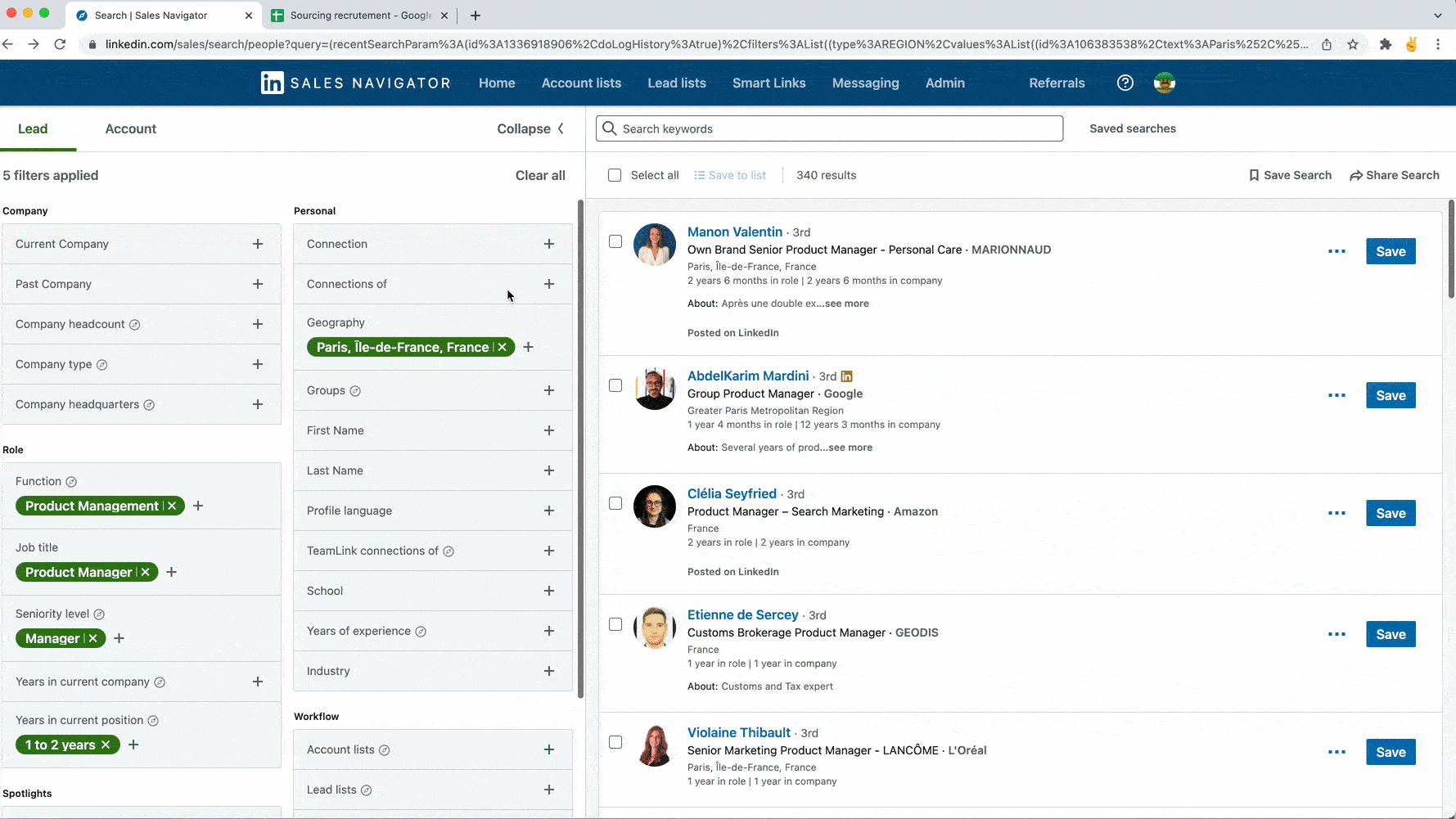According to BPI- France’s 2018 study, 57% of SMBs-ITCs lack talent to grow or take a step forward. Sourcing in the context of candidate recruitment is more than ever a major issue.
In this article, we are going to give you the keys to set up an efficient recruitment sourcing strategy:
- Sourcing in recruitment: definition
- Sourcing methods & strategy for recruitment
- What steps to take to set up your sourcing plan
- Tools to help you in your sourcing
Sourcing plan for recruitment : definition
Sourcing is a term used in human resources management to describe a process that aims to identify candidates corresponding to the profiles sought by the client. In other words, sourcing is the set of actions carried out to access a recruitment pool and generate a maximum number of targeted applications for a given position.
Wikipedia
In short, sourcing in recruitment is an activity that generally takes place as soon as a recruitment need is identified. It consists of a series of actions that will allow to find potential candidates for the position to be filled.
To do so, the company will have to set up an efficient recruitment strategy to find, convince, audit and choose the talent(s) who will then join the company.
Recruitment sourcing strategy: Laser segmentation and enrichment.
Why source profiles on Linkedin?
Linkedin is the 1st professional social network in the world. It is full of business and recruitment opportunities and is the most up-to-date source of data regarding your potential recruitments. We will explain you how to target, segment, extract and contact your potential new talents on Linkedin.
It will allow you to hunt for profiles already in place that generally have more experience or more skills than someone who is openly “looking” for a position and cannot find it.
In this strategy we will show you how to :
- Build a list of potential candidates on LinkedIn Sales Navigator
- How to copy this list into a Google Sheet / Excel
- How to enrich this list to learn more about your prospects and segment them even better
- How to contact your candidates to recruit them
Simply put, how to source for your recruitment.
Prerequisite:
- A Linkedin Sales Navigator account
If you don’t have Linkedin Sales Navigator yet and are wondering whether or not to get it because of its price. Know that it is certainly an investment but it is extremely efficient. It will save you a lot of time in your recruitment and will allow you to target better candidates
It is a “must have” when you are recruiting. - An account on derrick app (free)
will allow you to import the Sales Navigator list into Google Sheet and enrich it with lots of information about your recruitment candidates.
- A little elbow grease.
And yes, if you want a good sourcing plan you’ll have to give a little of your time!
How do you source these candidates on Linkedin?
- Step 1: Do a search on Linkedin sales Navigator.

It’s very simple.
Go to this URL: https://www.linkedin.com/sales/search/people and do a search that matches the profile you are looking for for your recruitment.
Step 2: Your search is ready, we will import it into Google Sheet so we can properly filter our candidate search and enrich it as well.
Start by downloading derrick here: derrick-app.comThen
run derrick in a google sheet.

⚠️ You must install derrick and open the Google Sheet on the same email address. Otherwise you will have installed derrick on one address and opened Google Sheet on another and therefore you won’t find the extension.
Build Leads Lists in Seconds !
Install on Google Sheet : Import, Find & Enrich (with email) Leads & Companies in minutes.
Start Now and get 200 leads for free !
Step 3: Get your session cookie
Derrick needs your session cookie to retrieve the list you have pre-built on Linkedin.

To add your session cookie (li_at) nothing is easier:
If you are on Google Chrome:
- Open Linkedin Sales Nav
- Right click : Inspect
- Go to the “application” tab
- Search for “Cookies”
- Open the list and click on https://linkedin.com
- In the table that appears click on li_at
- At the bottom, your session cookie is displayed, you just have to copy and paste it in derrick.
If you don’t use google Chrome, go to this tutorial
Step 4 : Copy and launch Derrick
Now you just have to copy the URL of your Sales Navigator search and paste it into the “Import Leads” feature of derrick.

You don’t have to do anything else, Derrick will import the list and will send you an email when it’s finished.
Step 5: Enrich the data of your potential candidates to better target them.
Click on “Enrich Leads” and select the column where the linkedin url is and click ok.

You don’t have anything else to do, Derrick will take care of enriching the list and will send you an email when it’s done.
Step 6: conquer your candidates
By contacting them on LinkedIn manually or by automating the contact with tools like LaGrowthMachine.
Congratulations 🔥🎉🥳, You’ve sourced talented profiles in minutes and you’re ready to contact them!
Advantages / disadvantages of this recruitment sourcing method:
Advantages:
- Very efficient
- Fast
- Very precise targeting
- A real search for competent talent.
Disadvantages:
- Requires a Linkedin Sales Navigator account*
*Tip: Linkedin Sales Navigator offers 1 month free trial when you open an account. You can cancel at any time
The employer brand
Why build a strong employer brand?
An employer brand with enough impact will make talents want to know more about your company in order to join it. It will show the values of your organization and the reasons why you should become a new employee during the recruitment process.
A site like Welcome to the Jungle presents for example the new companies or the companies of the moment. Building a strong employer brand is a strategic way of sourcing for recruitment as it will attract new talent that may already be in place or in a remote geographical area.

How to build a strong employer brand?
A company will first identify its key values that give it notoriety and that correspond to the profiles it seeks. To highlight these values, it can deploy different methods. For example, it can make its current employees true ambassadors of its employer brand by encouraging them to talk about their experience.
Taking care of its image on its website, social networks or sites such as Welcome to the Jungle will allow it to reinforce its employer brand while remaining consistent in the message it wishes to communicate.
To build this employer brand effectively, the company will also emphasize the human dimension of its structure and will be particularly attentive to the well-being of its employees.
Trendy recruitment techniques, a quality website presenting the employees and regular and relevant posts on social networks concerning the company itself are all levers to exploit to build a strong employer brand.
Advantages / disadvantages of this recruitment sourcing method:
Advantages:
- Improvement of your brand image with your business partners, prospects, customers
- Retention of existing employees (reduction of absenteeism and turnover) More committed and enthusiastic employees
- Reduced sourcing and hiring costs
- Easier to attract talent
Disadvantages:
- Time-consuming strategy to develop
- Method that requires active and constant involvement, even outside the recruitment period
- Risk of treating a potential candidate as a potential client
- Discrepancy between the candidate’s expectations and the company’s reality if the employer brand is poorly mastered.
Co-optation
Why set up a system of co-optation
This system consists in recommending an acquaintance or a close friend for a position in the company. Co-optation thus makes it possible to put a relevant candidate directly in touch with the company that is looking for this type of profile; the employee is the intermediary who makes this co-optation possible. This recruitment sourcing plan, also known as participative recruitment, makes it possible to attract more qualitative profiles in most cases. The company saves precious time in its search for talent.

Advantages :
- Candidates with more qualified profiles
- Reinforcement of trust between the co-opter, the co-opted and the company
- Faster recruitment for the search and pre-selection of profiles
- Reduction of the cost linked to the search for profiles and therefore to sourcing
- More permanent recruitment and reduced turnover
- Access for the recruiter to candidates who are potentially more difficult to reach
- Reinforcement of the community spirit in the company Opening to new profiles, and therefore more diversity
Disadvantages :
- Risk of wanting to recommend someone close to you because they are looking for a job, not because they correspond to the profile sought.
- Tensions with the co-operator if the co-opted candidate is recruited but the job does not go well.
- Risk of seeing a co-operator blinded by the lure of gain (bonus if the co-opted candidate is recruited)
Job boards
These are platforms dedicated to job offers. The best known job board is certainly Indeed, which is constantly updated by companies looking for new recruits. This site is in fact both a job board and a job offer aggregator.
These “job marketplaces” are made up of a list of current recruitments on the one hand, and a CV database on the other hand, allowing recruiters to consult CVs that match their search for talent.

This method of sourcing in recruitment is more than ever relevant and applies to all fields of activity, all profiles and all levels of study.
The platforms allow you to quickly filter offers and candidates to find the most suitable “professional match” in just a few clicks. Some are even specialized like Wydden (for startups), FashionJobs for the fashion, luxury and beauty sector or LesJeudis which focuses on the IT sector.
Recruitment Sourcing Plan: What steps?
- Start by identifying your needs: what specific skills are you looking for? What is the minimum experience level?
- Define the type of profiles you are looking for (as you would design a persona in a commercial context). This will allow you to know, for example, which keywords to favor when launching your recruitment campaign.
- Then identify where to find talent; there are many and varied sources. You can do your recruitment sourcing on job boards, via recruitment agencies, professional social networks such as LinkedIn or even networks of higher education institutions. The most appropriate source(s) will depend on the type of profile you are looking for. In parallel, work on the “Career” page of your company’s website.
- Target potential talents on the previously defined channels (via social networking tools for example).
- Contact the profiles that interest you, in the most personalized way possible. Integrate the candidates’ information into a database that will allow you to manage your sourcing and then move on to the next step.
- Using the data of the candidates contacted, create a first selection. When you decide to reject a profile, specify the reason. Maybe it’s because the candidate is not currently available, but in a few months or years, he or she will be!
- Maintain a constant watch while continuing to work on your employer brand to quickly identify new talent while being able to attract others to your company, even outside of the recruitment period.
Recruitment Sourcing Plan. what tools?
Here is the list of tools mentioned in the article that will help you get started in recruitment sourcing!

0 Comments